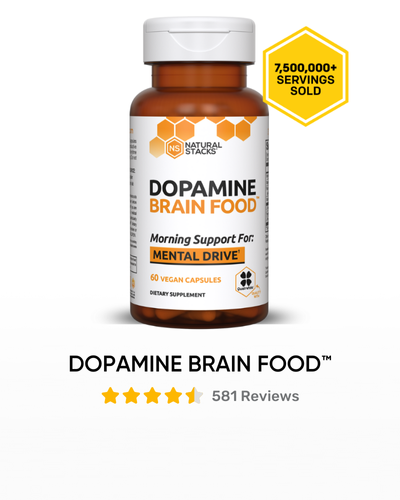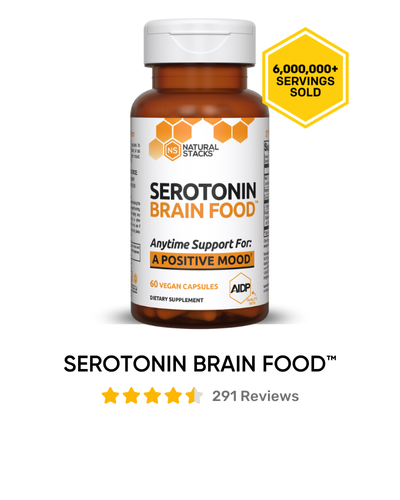What is Metformin? And Why Do Scientists Think It Can Extend Your Lifespan?

One of the only givens in life is that it will come to an end.
As humans, we’re obsessed with maximizing the number of years in our lives, and the amount of life in our years.
Among all the many different ways to support optimal health and promote longevity (diet, exercise, minimizing risk exposure) is one seemingly unexpected compound that was developed to treat diabetes.
It’s called Metformin, and for a drug with such a relatively simple design and function, the compound has garnered a tremendous amount of attention as one of the world’s most promising anti-aging drugs to increase lifespan.
A Simple Drug with Anti-Aging Implications
Metformin (sold as Glucophage) was first synthesized in the 1920s, but didn’t gain traction in the medical community until the 1980s, where it became (and continues to be) the drug of choice for treating insulin-resistant type 2 diabetes [1].
A few key studies over the years that initially sought to investigate the drug’s effect on glucose metabolism, stumbled upon an unexpected phenomena. When compared to the healthy control groups, the metformin groups appeared to get less cancer, and even more fascinating, when subjects in the metformin group did get cancer, they lived longer than the healthy control group.
Why would this be?
To answer that question requires some discussion of a few key concepts and theories so we don’t have to interrupt the story later on.
To start, let’s talk about how our cells get their energy.
How Healthy Cells Derive Their Energy
You can’t have a discussion about cellular energy production without talking about mitochondria.

Mitochondria are quite literally the power plants of your cells -- they are the direct source of over 90 percent of your body’s energy [2].
These tiny organelles are thought to be derived from bacteria and have evolved to become an integral part of our human physiology [3].
Alas, in order for every organ and tissue in your body to function correctly, they need energy -- energy that is produced by your mitochondria.
To produce chemical energy, your mitochondria need oxygen. They can get it from the air you breath, or from the fat and glucose you ingest from your diet. This process of using a mixture of oxygen, glucose, and fatty acids to create intracellular energy is called oxidative phosphorylation [4].
Oxidative phosphorylation is the action of turning glucose and fatty acids (that come from the food you eat) into adenosine triphosphate (ATP) energy using oxygen (from the air you breathe).
ATP: The “Currency” of Energy Used By The Body
ATP that is generated in your cell’s mitochondria can be extracted in two ways:
- Aerobic metabolism
- Anaerobic metabolism
Aerobic metabolism is the process of extracting ATP from glucose or fatty acids when the demand for ATP is not too great. If you think about slow, steady-state cardio exercise, this is primarily aerobic metabolism-dependent. It is efficient, oxygen is readily available, and it entails a minimal amount of metabolic waste products -- just oxygen and carbon dioxide.
When there is sufficient oxygen in the cell, the mitochondria are incredibly efficient at generating ATP (about 36 units from molecule of glucose) [5].
Anaerobic metabolism, on the other hand, is a less efficient process of extracting ATP solely from glucose. This is how you fuel high-intensity, explosive, intermittent exercise. In this state your body has a decreased oxygen efficiency and your cells predominantly rely on glucose to generate ATP. This process is less efficient and generate more waste products like lactate and hydrogen ions [4].
Anaerobic metabolism is characterized by the body’s inability to deliver oxygen quickly enough to the cells (only about 4 units of ATP per molecule of glucose).
Aerobic metabolism is the preferred, more efficient way your body generates energy, but anaerobic metabolism is dominant during times when oxygen is not readily available (HIIT exercise, sprinting from a lion that’s chasing you, etc.)
Healthy cells (and their respective mitochondria) are able to switch between metabolisms, but in some instances, cells lack the ability to use oxygen altogether in their creation of ATP.
A (Very) Brief Primer On Cancer Metabolism
A common misconception of cancer cells is that they grow exponentially faster than healthy cells.
This is actually incorrect.
Cancer cells grow at roughly normal speeds compared to healthy cells, but they do not respond to normal cell signaling. This means that while normal cells will grow and stop growing periodically, cancer cells do not know when to stop growing [5].
Another lesser-known fact: your body actually makes damaged and cancerous cells every day [6].
In most cases this is actually a good thing.
See, your cells have a tightly-controlled system, or network of programmed self-destruction “triggers” including:
- Disruption of intracellular growth factor signaling
- Damaged proteins
- DNA damage
- Presence of reactive oxygen species (ROS)
All cells have a controlled, programmed cell death if their environment isn’t very hospitable.
When damaged or cancerous cells are present, metabolic byproducts of ATP production (such as ROS) normally set in motion a cascade of events that triggers this controlled cell-death -- called apoptosis.
The result is the disposal of damaged cells so your body can replace them with normal, healthy cells [6].
The problem, of course, is that cancer cells seem to have a built-in mechanism that makes them resistant to this “suicide” protocol [6].
For a deeper dive on apoptosis, check out this in-depth video:
Cancer’s Mitochondrial Defect
Cancer cells do not know when to die, and a major reason for this is that most, but not necessarily all, cancer cells have defects in their mitochondria that prevent them from carrying out oxidative phosphorylation.
Remember, oxidative phosphorylation is the process of our cell’s mitochondria using glucose and fat with the help of oxygen to generate ATP. This process of energy production necessarily entails the creation of metabolic byproducts and ROS that are used to trigger apoptosis.
Most cancer cells do not undergo this process.
One of the mechanisms of how chemotherapy works is that chemo drugs force cancer cells to trigger apoptosis by stimulating their mitochondria with ROS.
Here’s Dr. Rhonda Patrick to explain it further:
“One of the mechanisms by which chemotherapeutic drugs work is they create reactive oxygen species. They create damage, and that’s enough to push that cancer cell to die.
The reason for this is because, a cancer cell -- which is not using its mitochondria, meaning it’s not producing those reactive oxygen species any longer -- all of the sudden you force it to use its mitochondria and you get a burst of reactive oxygen species because that’s what mitochondria do, and boom, death, because that cancer cell is already primed for that death.
It’s ready to die.”
Since most cancer cells cannot undergo oxidative phosphorylation to get their energy, how do they get their energy?
The Glucose Theory Of Cancer Metabolism
While the exact explanation has yet to be elucidated, there is evidence to suggest that most (again, not all) cancer cells exclusively use glucose to make ATP without the use of their mitochondria [7].
Whether they do this because of DNA damage, or activation of certain genes that promote cell growth unresponsive to normal cell-signaling, is unclear.
What IS clear is that cancer cells are able to generate energy without undergoing aerobic metabolism and without using their mitochondria at all. It doesn’t matter how much oxygen or fatty acids cancer cells have access to, they preferentially use glucose to make ATP.
This means that while healthy cells in the body are able to derive energy from two pathways (aerobic and anaerobic metabolism), cancer cells are fueled by the latter, highly inefficient pathway. It is for this reason -- this metabolic quirk -- that scientists have been feverishly looking for a therapy to target this quirky pathway that makes cancer growth possible.
So, if we know that cancer cells almost exclusively rely on glucose to grow and proliferate, that begs the million dollar question: what happens to cancer if we reduce the amount of glucose in the body?
Is it possible to ‘starve’ cancer cells?
Let’s Talk About Metformin
Cancer’s ability to preferentially use glucose to generate ATP without oxygen and without their mitochondria is indeed a metabolic abnormality. And it’s this particular metabolic quirk that is a target mechanism for a number of different therapies -- including metformin.
Metformin has been the subject of at least three different retrospective studies. As I mentioned in the introduction to this article, even when results of these studies were adjusted for factors like body weight and other medications, individuals who took metformin appeared to get less cancer, and when they did get cancer, they seemed to live longer.
Why might this be?
The answer to the question involves a basic understanding of the pharmacology of metformin, that is, what it actually does in the body.
How Metformin Works
Metformin is a pretty simple drug that may just be one of those rare “good” drugs that has significantly beneficial properties in altering glucose metabolism with no foreseeable downside.
Metformin does several different things, but most notably it:
- Drastically decreases glucose production in the liver
- Increases insulin sensitivity in body tissues
- Improves glucose disposal
- Improves fatty acid utilization
- Reduces the damaging effects of advanced glycation end-products.
For these reasons, metformin is used as a first-line medication for the treatment of type 2 diabetes.
So does metformin have some unique anti-cancer properties, or is the reduction in cancer and increase in longevity attributable to the decrease in glucose?
It’s unclear. Sure, this may be a chicken-or-the-egg scenario, but we have more than enough clues to draw some curious insights.
Metformin has been shown to act on several pathways that are known to be involved in the growth and survival of cancer cells.
The First Pathway: AMPK
Metformin has been shown to activate something called adenosine monophosphate activated protein kinase (AMPK), an enzyme that is expressed in numerous tissues throughout the body, that plays a critical role in regulating cellular energy homeostasis.
AMPK is also a pathway that kicks in during autophagy, the cellular process of cleaning up and breaking down damaged cells, cellular debris, and even pre-cancerous cells.
Whether a decrease in glucose as a result of increased activation of AMPK is a contributing factor to reduced cancer risk, or whether AMPK possess some unique and undiscovered anti-cancer properties is unknown. But we do know metformin, for such a simple, innocuous drug, mediates AMPK, which is one of the key pathways that is activated during exercise, fasting, from polyphenol consumption, and from calorie restriction, all of which are closely associated with increased longevity [8].
The Second Pathway: mTOR
The mechanistic target of rapamycin (mTOR) is a signaling pathway that regulates a variety of growth factors in the body, and stimulates activation of insulin receptors and insulin-like growth factor receptors (IGF-1), among others. Activation of mTOR allows us to put on muscle, increase various hormone concentrations, increase ATP production and create new mitochondria [9].
On the one hand, mTOR is responsible for many of the performance-related processes that improve quality of life (physical strength, mental acuity, increased energy efficiency, to name a few), but elevated mTOR activation has also been implicated as a contributing factor to an increasing number of pathological conditions like cancer, obesity, type 2 diabetes, and neurodegeneration [10].
MTOR inhibition has been shown to slow aging in yeast and invertebrates, extend lifespan in mice, and has an impact on a variety of age-related diseases, and metformin has been shown to partially inhibit this pathway [11].
From a longevity standpoint, there is a good amount of evidence to suggest low activation of mTOR is associated with increased longevity.
The Bigger Picture
Metformin is a simple drug, pharmacologically, and the implications it has are something to keep an eye on moving forward. Currently there is no data regarding metformin supplementation and longevity, but there are some human trials underway which will provide some new data on the subject.
Metformin looks promising, and there are currently over a dozen clinical trials underway trying to replicate metformin’s effect in targeting this ‘metabolic quirk’ with glucose and/or insulin reduction diets, or trying to target any implicated mechanisms of action related to cancer’s metabolic abnormality.
When it comes to longevity, the following practices work on the same AMP-k pathway as metformin and are believed to confer many of the same benefits regarding longevity and reduced cancer risk:
- Caloric restriction
- Intermittent fasting /alternative day fasting
- Low protein diet
- Ketogenic diet
- Exercise
- Polyphenol intake
Until we learn more about the metformin’s effect on longevity, it’s safe to say that a regimen of a diet high in plants and polyphenols, some form of fasting, and exercise is one of the best, most well-researched ways to live long and live well that we know of.
Take-Away Points
Take-away #1: Metformin is a common and effective drug to help treat type 2 diabetes, with no foreseeable downside.
Take-away #2: Retrospective studies looking at patients taking metformin have shown that diabetic patients who take metformin appear to get less cancer and live longer than the control group.
Take-away #3: Reducing glucose and or insulin in the body may “starve” cancer cells of their preferred fuel source (metformin does this very well via AMPK-activation and subsequent decreased glucose production).
Take-away #4: Activation of AMPK and partial inhibition of mTOR via metformin may harm cancer cells in some other way that has yet to be elucidated.
- Rojas, L. B. A., & Gomes, M. B. (2013). Metformin: an old but still the best treatment for type 2 diabetes. Diabetology & metabolic syndrome, 5(1), 6.
- Bratic, I., & Trifunovic, A. (2010). Mitochondrial energy metabolism and ageing. Biochimica et Biophysica Acta (BBA)-Bioenergetics, 1797(6), 961-967.
- Martin, W., & Mentel, M. (2010). The origin of mitochondria. Nature Education, 3(9), 58.
- Senior, A. E. (1988). ATP synthesis by oxidative phosphorylation. Physiological Reviews, 68(1), 177-231.
- https://www.ncbi.nlm.nih.gov/books/NBK9963/
- https://www.ncbi.nlm.nih.gov/books/NBK26894/
- Vander Heiden, M. G., Cantley, L. C., & Thompson, C. B. (2009). Understanding the Warburg effect: the metabolic requirements of cell proliferation. science, 324(5930), 1029-1033.
- Diabetes Prevention Program Research Group. (2012). Long-term safety, tolerability, and weight loss associated with metformin in the Diabetes Prevention Program Outcomes Study. Diabetes care, 35(4), 731-737.
- Salminen, A., & Kaarniranta, K. (2012). AMP-activated protein kinase (AMPK) controls the aging process via an integrated signaling network. Ageing research reviews, 11(2), 230-241.
- Laplante, M., & Sabatini, D. M. (2012). mTOR signaling in growth control and disease. Cell, 149(2), 274-293.
- Johnson, S. C., Rabinovitch, P. S., & Kaeberlein, M. (2013). mTOR is a key modulator of ageing and age-related disease. Nature, 493(7432), 338-345.










